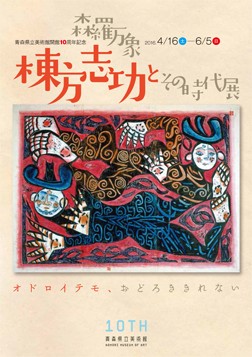
World wand painter, Shiko Munakata who were born in オドロイテモ, … Aomori-shi where I could not be surprised at. The board image carved in the powerful line continues attracting us with fresh surprise at the present when it was past 40 years after death.
The first of the memory exhibition of the tenth anniversary of the Aomori Museum of Art opening takes away Shiko Munakata. How did Munakata born as a son of the Kaji craftsman of Aomori-shi become “world Munakata?” At an unprecedented cut end to display a life and a masterpiece of Shiko Munakata including the reproduction display of the Venice Biennale in 1956 when I established receiving a prize, a global evaluation with the display of the ceramic art work by writers of the people art exercise that started him whom Shiko Munakata sees the frontispiece of the sunflower of Gogh by the book exhibition and begins in will ざすきっかけとなった magazine “white birch” and the work of neighboring Western picture painters in painters, and Munakata treasured in the world, international print grand prix with art at the same period to surround him, I approach in the total picture of Shiko Munakata. I add the Shiko Munakata work to approximately 100 points, work approximately 50 points of writers of other close present age mainly on a representative masterpiece, and the document of the first public exhibition including the letter with Junichirou Tanizaki around the cuts of the novel “key” is displayed, too.
By dynamic development to the very large space of Aomori Museum of Art of the masterpiece including a maximum board image “fence of the macrocosm” of 17 meters in width and the display full of characteristics only in Aomori Museum of Art including the corner of “Jomon and Shiko Munakata”, as for the book exhibition, it will be an exhibition conveying charm to run out, and not to do of Shiko Munakata with new surprise.
A session: From Saturday, April 16, 2016 to Sunday, June 5
A closed day: On Monday, April 25, it is an opening time on Monday, May 23 on Monday, May 9: Until May 31 /9:30-17:00 (as for the entering a building until 16:30)
After June 1 /9:00-18:00 (as for the entering a building until 17:30)
View charges
Free of charge less than general 1,300 (1,100) Japanese yen, high large straight 800 (600) Japanese yen, primary and secondary student
※() is advance ticket and more than 20 groups rate
※Person and one person with impaired mind and body of attendance are free
※The permanent exhibition view charges are not included
Set ticket with the permanent exhibition
General 1,700 (1,510) Japanese yen / Senior High School, university student 1,000 (840) Japanese yen
※(groups rate more than 20 in)
※Permanent exhibition view charges of the person of advance ticket bringing are public 410 yen / Senior High School, university student 240 yen
Advance ticket
Release period
From Saturday, March 5, 2016 to Friday, April 15
Release place
Lawson ticket [L cord 26887]
ポ みっと! Ticket
Ticket Pia [P cord 767-476]
Aomori-shi:
Sun road Aomori, Narita head office しんまち shop, SAKURANO DEPARTMENTSTORE CO.,LTD. Aomori store, citizen of the prefecture consumers’ cooperative 11 store, prefectural office consumers’ cooperative (prefectural office building basement the first floor), Aomori-shi staff consumers’ cooperative (the Aomori City Hall, Aomori-shi Municipal Hospital, Yanagawa Government building), はまなす Hall (Aomori-shi worker mutual aid society), sightseeing in Aomori product building “ass PAM” the first floor information, Aomori Museum of Art museum shop, Aomori Museum of Art the first floor synthesis guidance Hirosaki-shi: SAKURANO DEPARTMENTSTORE CO.,LTD. Hirosaki store, Kii country shop bookstore Hirosaki store, Hirosaki University consumers’ cooperative Goshogawara-shi: Town of ELM
Shichinohe-machi: Uichi Takayama memory Museum
Hachinohe-shi: Eight SAKURANO DEPARTMENTSTORE CO.,LTD. shop, relations Miharuya shop, Hachinohe portal museum はっち
The highlight of the exhibition
The previous night that flowers with individuality of “Shiko Munakata” in expression of the print original in 1 ワ on the Gogh になるっ – Shiko Munakata previous night modern art Shiko Munakata of Tokyo and Aomori. Young man, Shiko Munakata dreamed of becoming oil painting painter Gogh triggered by the cut of “the sunflower” of Gogh published in “the white birch”. Here, I introduce the art situation at the same period to surround Munakata who has begun to walk the way of the painter including the work of Ryusei Kishida, Tsune Nakamura, Tetsugoro Yorozu, Western picture painters including Ryuzaburo Umehara, Western picture painter, woodblock artists who produced the cause of the influence of the post-impressionists including associated writer and Gogh and Cezanne of “the white birch” of native district Aomori, the work of Sumio Kawakami who came under a big influence on beginning a print and display a work of Shiko Munakata on a young day to explore the cause of the background, various possibility in these times.
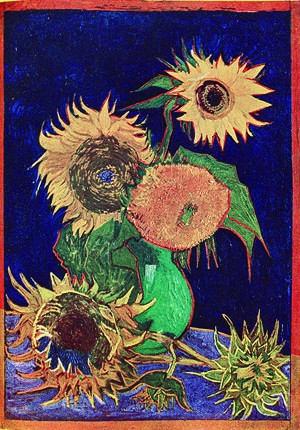
“White birch” Vol. 12 (1921) second frontispiece
Gogh <
With 2 people art campaign with … teacher, Muneyoshi Yanagi
“I joined it very much, and, in 1936, an early masterpiece did the beauty”, and Shiko Munakata was found by を Muneyoshi Yanagi, and a willow, Kanjiro Kawai, the interchange with sponsors of the people art exercise such as Shoji Hamada began. Munakata acquires culture commencing with the cause, Japan of their instruction or Asian tradition, Buddhism and brings about a superior work about these in sequence. In this chapter, Munakata displays a book and Kanjiro Kawai of Muneyoshi Yanagi who did 愛藏, a bowl of Shoji Hamada as well as a work produced in the interchange with them and introduces a deep relation of Shiko Munakata and the people art exercise.
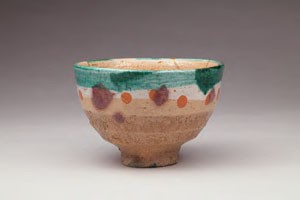
Shoji Hamada <
1968 earthenware diameter 14.0* high 9.5cm
Shiko Munakata Memorial storehouse
To forest – war, the evacuation of 3 masterpieces and the world
In 1945, Shiko Munakata evacuated to Fukumitsu (existing Nanto-shi, Toyama) in families in last years of war. In the interchange with cultured people of of the field or each place where I visited them, Munakata greatly opened width of the expression including board image and board image book, the Japan image about Buddhism or poetry while the materials including the woodcut were short. I introduce a work of the time when I brought about a masterpiece while pursuing new possibility including war mainly on the work of the Fukumitsu residence era here.
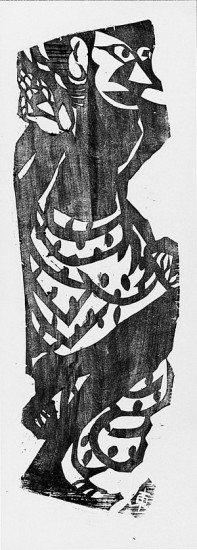
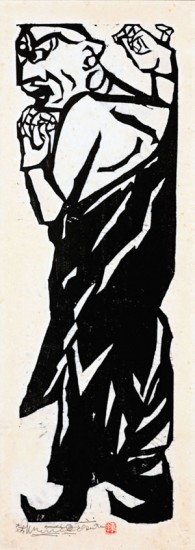
Than left) Shiko Munakata <<東西南北頌>> “fence of Yamato Takeru” 1939 xylograph, paper 19.2×41 .0cm
Shiko Munakata Memorial storehouse
Than right) Shiko Munakata <
Shiko Munakata Memorial storehouse
Shiko Munakata received the grand prix of the print section by Venice Biennale in 1956 in Munakata Venice Biennale and later years of 4 world and became known as “world Munakata” at a bound outside the country. Here, I actually display a print work exhibited at the exhibition and Kunitaro Suda, Kazu Wakita, Nagao Yamaguchi, Shigeru Ueki, the work of the Japanese writer such as Toyoichi Yamamoto exhibited at the same Biennale including a displayed work partly. In addition, after this, I introduce the work until the later years including produced board image and a series of oil painting images when “a fence of the macrocosm” which is a work produced at the time of a trip to Europe and America and a maximum print work visited India in the most later years.
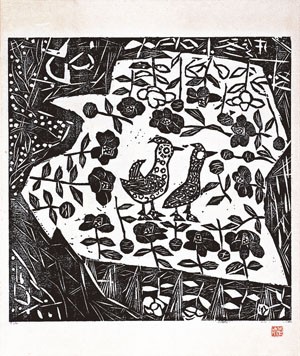
Than Shiko Munakata <<柳緑花紅頌>> “a fence of the Wabisuke Camellia”
1955 xylograph, paper 46.5*46.7cm
Shiko Munakata Memorial storehouse
5 literature and woman image – evil spirit and Buddha-nature
Interest was very deep in literature, and Munakata dealt with board image works about work and the poetry of the binding of a cut and the book much from youth. Above all, Isamu Yoshii, a board image, the cut about a song and the novel of Junichirou Tanizaki were the works which Shiko Munakata concentrated power on in postwar period, and many masterpieces including “流離抄板画柵” and “a key board image fence” were born. In addition, these works which featured the theme of modern women brought new development in an image of Munakata for women, and, as for the woman image of the woodblock print of everyday life which was produced triggered by “a key”, and got popularity, it was one of the driving forces to raise popularity of Shiko Munakata in later years. I display the beautiful woman images such as woodblock prints of everyday life born from Yoshii, board image work and there about the work of 谷﨑 here and investigate it about’s original woman expression of Munakata who is bewitching and offered the Buddha-nature.
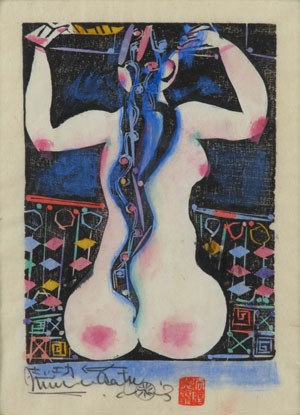
Than Shiko Munakata <<緋薔薇頌>> “a fence of the back hair”
1956 (1958 年摺) xylograph, coloring, paper 20.0*15.0cm
Shiko Munakata Memorial storehouse
Prayer to a child, Shiko Munakata – hometown and parents of 6 Aomori
Shiko Munakata of later years came to be known as “world Munakata” widely and, in addition to an international evaluation, established a high evaluation in the inside and outside the country by the receipt of a decoration of the Order of Culture. However, on the other hand, I strengthen the thought to the hometown year by year and come to make a lot of works about the hometown including Mount Osore and the Tsugaru samisen. Deep 思 いへとつがなります to the parents who brought up his middle oneself that thinking to the hometown was poor who loved Nebuta as own ancestors, and called itself “child Shiko Munakata of Aomori.” The full-scale board image work in the last brought by the prayer to work group produced in thought of the longing for home and parents displays “a fence of 捨身飼虎” in this chapter.
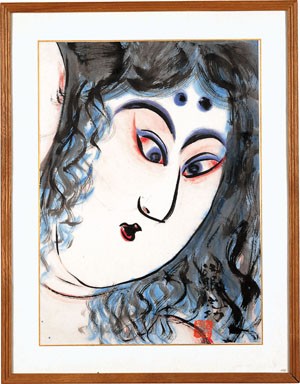
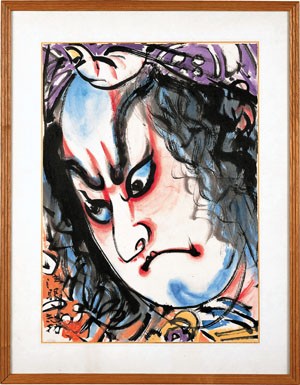
Shiko Munakata <
1971 coloring, paper 60.0×43 .2cm
Shiko Munakata Memorial storehouse
Tohoku of 7 animism and Jomon – Shiko Munakata
It has been talked about Shiko Munakata by “the Jomon” when it was often the Tohoku-like characteristic and the word “animism”. In this chapter, Munakata sees it and, in addition to straw-rope patterned pottery and a clay doll of “the taste temple collection” that I named it, considers connection with Shiko Munakata and the northeastern mind climate through a comparison with Osamu Dazai, Kenji Miyazawa who took up the folk document in conjunction with his work, a common subject.
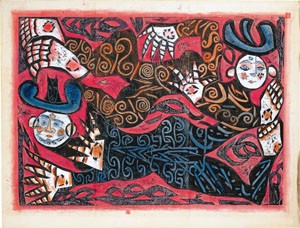
Shiko Munakata <
1968 xylograph, coloring, paper 105.0×140 .0cm
Shiko Munakata Memorial storehouse
Allied event
The date and time when “I recite a symposium about child Shiko Munakata – Shiko Munakata of Aomori:” Saturday, April 16 from 13:30 to 15:30
A place: Aomori Museum of Art theater (200 capacity, application unnecessary) admission: Free of charge
A panelist: Yoriko Ishii (Shiko Munakata study, curator, Shiko Munakata law grandchild) Hirotoshi Sudo (Hirosaki university professor, Japanese history of art) Kohei Takeda (aide Shiko Munakata Memorial director) Ken Makino Ichiro (Aomori Museum of Art director special assistance) coordinator: Toru Ikeda (Aomori Museum of Art art plan section manager)
Pleasure of the tea party – Shiko Munakata style tea
The date and time: It is a place for from 14:00 to 16:00 for from 10:00 to 12:00 on Saturday, April 30: Aomori Museum of Art workshop A (each 15 capacity times, application required) lecturer: Yoriko Ishii (Shiko Munakata study, curator, Shiko Munakata law grandchild)
※Please see art museum HP about the details such as application methods.
The memory lecture “Shiko Munakata in the modern Japanese history of art” date and time: A Saturday, May 14 from 13:30 to 15:00 place: Aomori Museum of Art theater (200 capacity, application unnecessary) admission: Free of charge
A lecturer: Joshibi University of Art and Design’s professor Kensho Kitazawa (close present age Japan history of art)
A lecture “Shiko Munakata and folk handicraft”
The date and time: A Sunday, May 15 from 13:30 to 15:00 place: Aomori Museum of Art workshop A (40 capacity, application unnecessary) admission: Free of charge
A lecturer: Hideaki Aida (association of Aomori folk handicraft’s chairperson)
Gallery talk
The date and time: On Saturday, April 23, it is each from 14:00 to 15:00 on Saturday, June 4 on Saturday, May 28 on Saturday, May 21 on Saturday, May 7
A place: Aomori Museum of Art plan exhibition room participation fee: Free (but the admission ticket of the book exhibition is necessary.)
Aomori-shi, Nakano-ku, Tokyo, Nanto-shi, Toyama of the Shiko Munakata summit (Aomori-shi sponsorship) Shiko Munakata connection, the chiefs of 4 local governments of Kurashiki-shi, Okayama gather and talk about sightseeing promotion and the culture art promotion that utilized the culture art assets such as works of the artist Shiko Munakata.
The date and time: Sunday, May 29
A place: Aomori Museum of Art theater
※As for the details, please see Aomori-shi HP.
※About the latest information, the details of the event
Please confirm it in homepage https://www.aomori-museum.jp Facebook https://www.facebook.com/aomori.museum Twitter https://twitter.com/aomorikenbi.
Inquiry
Shiko Munakata exhibition executive committee ()〒 038-0021 Yasuta, Aomori-shi, Aomori character Konno 185 in Aomori Museum of Art
Tel: 017-783-3000
Fax: 017-783-5244
Sponsorship: Shiko Munakata exhibition executive committee (Too Nipposha, Aomori Television Broadcasting, federation of sightseeing in Aomori, Shiko Munakata Memorial, Aomori Museum of Art) cooperation: Japan Folk Crafts Museum, Aoimori Railway, house ワ ラッセ of Nebuta, JR East Aomori Commercial Development support: NHK Aomori broadcasting station, Aomori cable TV, Aomori FM Broadcasting Co. Ltd., Kahoku Shinpo Press Aomori total station, Mainichi Shimbun Aomori bureau, Yomiuri Shimbun Aomori bureau, Sankei newspaper publisher Aomori bureau, Hokkaido Shimbun Hakodate branch office, East Japan Railway Co. Morioka branch office, Aomori Board of Education, Aomori-shi Board of Education, Aomori-shi
